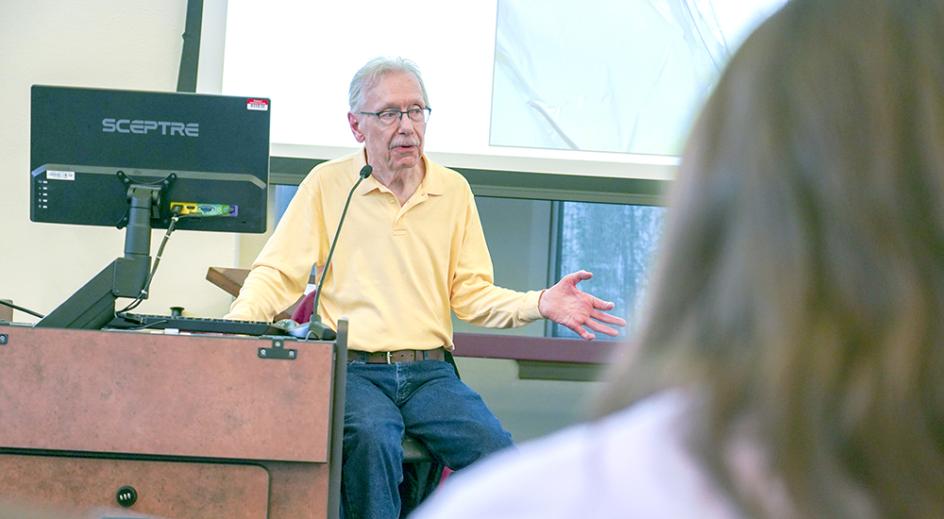
On Friday, Mark Peeples ’74 visited his Sweet Alma Home to share information about his cutting-edge research with microbiology students and invested community members. He was invited by Dr. Justin Pruneski, to share his life's work in microbiology with the students of Dr. Pruneski's Cell and Molecular Biology, and Microbiology Courses.
Dr. Peeples began his career studying microbiology at Heidelberg. “I learned I loved asking questions – and then trying to answer them,” he shared with students who weren’t so different from who he was 49 years ago. During his time, he seized every opportunity he could – from working for two years on an 8-year-old river research project, or traveling to Europe (which he still tries to do when given the opportunity.) He was proud to work, when he was young, in one of the two labs in the world that were studying respiratory syncytial virus (RSV) at the time. Dr. Peeples currently works for Nationwide Children’s Hospital and the Ohio State University College of Medicine in Columbus, Ohio. Today, he still researches the virus.
RSV is what many healthy people would be happy to call a common cold. But for infants and the elderly, the virus can be far more severe. In particular, the little airways of children under 6 months old can be clogged with difficult-to-expel mucus because of high levels of inflammation the virus causes. Dr. Peeples explained to students that the subject of his research was the No. 1 cause of hospitalizations in children’s hospitals, and the No. 2 cause of death in the first year of life for developing countries. Dr. Peeples studies the virus in hopes of producing a vaccine.
Dr. Peeples came prepared to demonstrate his life’s work to current Heidelberg students. With photos from his microscopes, he showed how RSV causes syncytia – or the fusing of cells that block airways. He showed a detailed diagram of not only the virus itself, but also how it directly affects and spreads throughout cells within only a matter of days. Part of his work has been to understand three significant proteins within the RSV virus – one of which, glycoprotein, his lab discovered after other labs simultaneously dismissed it as “trash” – and to find new ways to prevent these proteins from attaching.
For students who dream of working in the lab, Dr. Peeples provided a detailed explanation of how they come to have cells that can be used in their tests and processes – which involves utilizing the cells of donated lungs that are too weak to be transplanted. Through a gentle digestion process and freezing, Dr. Peeples’ lab is able to create and infect real respiratory cells for examinations – without requiring anyone to be sick. Students asked him about this process, and the other uses of these methods – which were also helpful in the battle against SARS Co-V2.
Dr. Pruneski was excited to get to interact with Dr. Peeples again, so students could understand the real-world importance of what they were studying. "His presentations are inspiring because they show that scientific breakthroughs do not happen overnight," Dr. Pruneski shared, "I also hope it was inspiring to students to see that his long and productive career all started exactly where they are now; he was a student at Heidelberg studying hard, not sure what he wanted to do, but took advantage of opportunities that presented themselves and made the most of them."
By getting a first-hand look at Dr. Peeples’ passion, path and publications, current students were able to feel inspired. A life in the lab isn’t just research, but a life of saving infants and protecting families, as Dr. Peeples does.